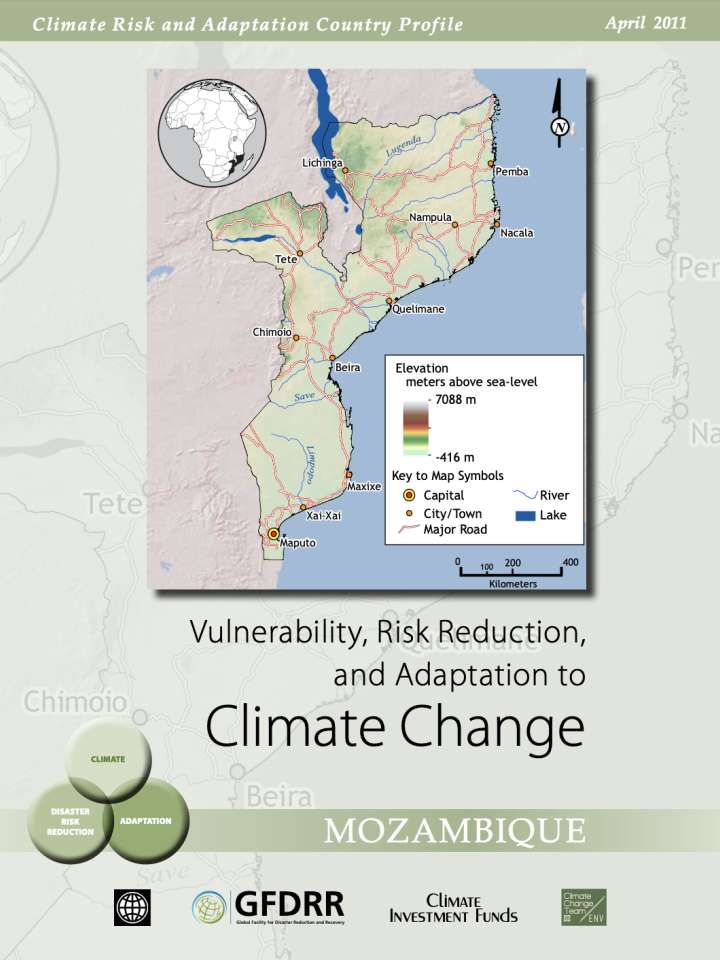Climate risk and adaptation country profile: Vulnerability, risk reduction, and adaptation to climate change: Mozambique
This paper profiles the vulnerability, risk reduction, and adaptation to climate change of Mozambique. Droughts are the most frequent disaster, occurring every three to four years, and pose a major constraint to development since most of the country’s population, especially the poor, reside in rural areas and rely on rain-fed agriculture. Mozambique also lies at the end of numerous transnational river basins and flooding in its deltas is a perennial threat to both farmers and infrastructure, especially when coupled with cyclonic storm surges. Mozambique is already investing in prevention of natural hazards and improving its early warning systems. Adaptation measures are being implemented in the agriculture, fisheries, energy, environmental, and water sectors, with particular attention being paid to the coastal zones and erosion control.
The paper identifies the following priority adaption measures for the country:
- Improving early warning systems;
- Strengthening farmer coping capacities;
- Improving the knowledge and management of rivers;
- Limiting erosion;
- Developing sustainable fishing;
- Promoting public awareness of climate change;
- Improving agency coordination;
- Integrating climate change into decentralized district planning.
Explore further
